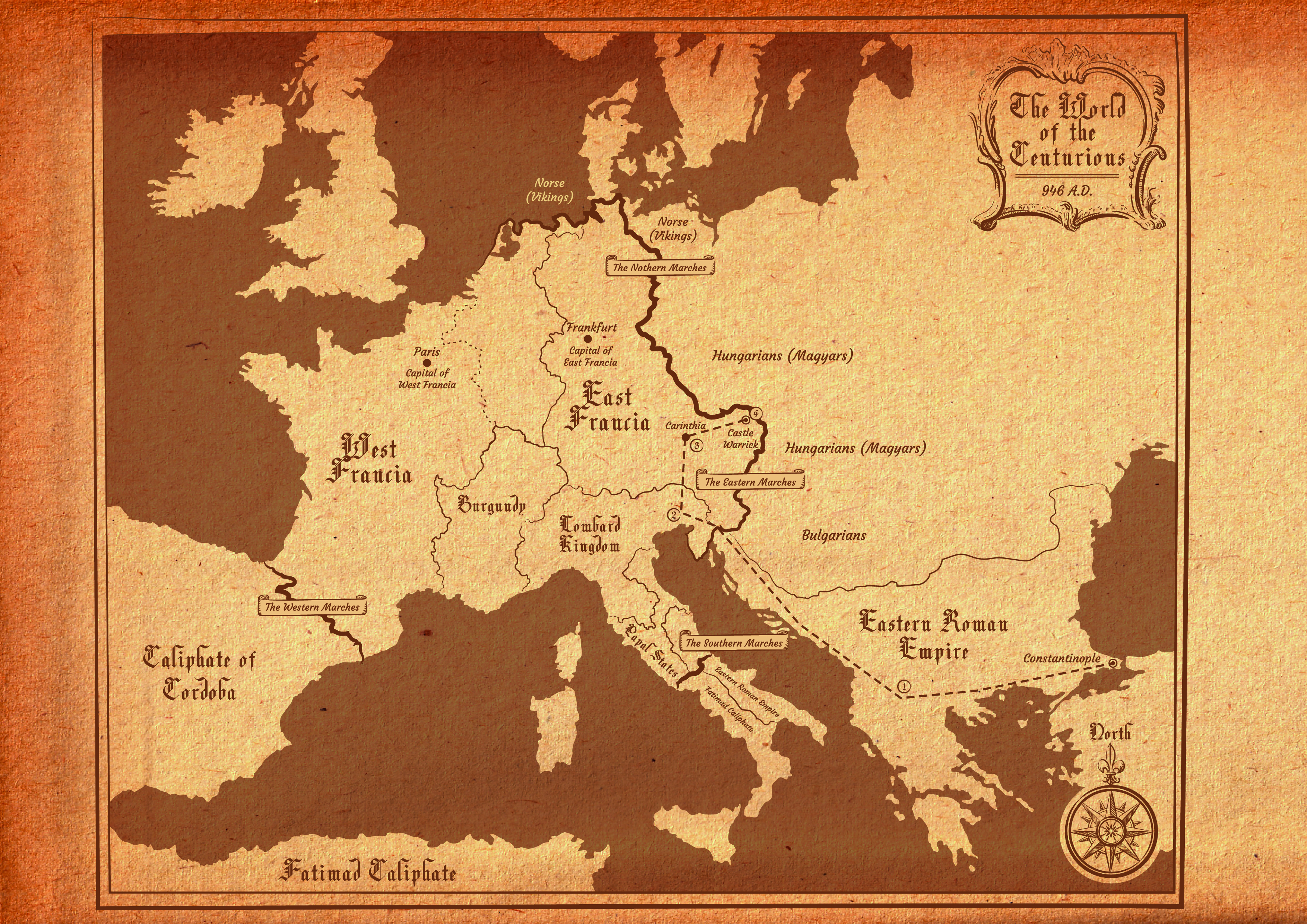Western Roman Empire
The fall of the western half of the old Roman Empire is conventionally dated to 476 A.D. when the German military commander Odoacer led a revolt and deposed Romulus Augustulus and declared himself ruler of Italy. The reality of the fall of Rome is more complicated and began with declining crop yields and waves of Gothic invaders fleeing the Huns in the late 300's A.D. The declining resources led to a collapse in the support network for the Roman Army while the waves of invaders caused the administration network in the west to fragment. These two gradual events produced a series of minor kingdoms and petty states protected by local knights and militias.
Things began to change in the west with the rise of Charles "The Hammer" Martel to the leadership of Francia in 718 A.D. Charles centralized the government in Francia and led several military campaigns that establish the Franks as the rulers of Gaul. His son Pepin was an effective king who extended Frankish power into southern France. Charles' grandson was Charlemagne who led the Franks in a series of campaigns that conquered all of central Europe and northern Italy. Though Pepin was technically the first "Carolingian" Charlemagne is the one who re-established the "Roman Empire" when he was crowned Emperor by the Pope in 800 A.D. Just as later historians have given the name "Byzantine Empire" to the Eastern Roman Empire, so later historians have given the name "Carolingian Empire" to this revived version of the Western Roman Empire. In both cases, East and West, the people would have referred to themselves as "Romans" even though the classical Roman Empire that most modern historians think of when they use that term had fallen centuries before.
By 946 A.D. The Carolingian Empire has broken into two parts, Western Francia and Eastern Francia (sometimes called Germania). There was a Central Francia for a few years after the death of Charlemagne but it was quickly annexed by Western Francia. At this point, West Francia still dominates East Francia (Germania) but this balance of power is in the process of shifting as a strong king has come to power in East Francia (Otto I) while young King Louis IV of West Francia was faced with numerous rebellions including the powerful High the Great. Ultimately High the Great pledged loyalty to Otto I and Louis the IV is forced to surrender. Otto I leaves him in power in West Francia but Otto I and East Francia (soon to become the Holy Roman Empire) dominate Europe.
Demographics
The Frankish tribes exerted their influence over the entire area of central Europe. Those that settled in the west toward the end of the old Roman Empire eventually adopted Latin as their official language, served in the Roman army and adopted many of the training and battle techniques of the Romans. They also adopted much of the Roman legal system and accepted Christianity as the national religion. Those Germans in the east retained their German language and many of their old German customs. Christianity is the official language but is mixed with some of the old beliefs in rural areas. This creates a cultural and linguistic divide between western Europe under the Franks and Central Europe under the Germans. The Frankish king Charlemagne (Charles the Great) conquered all of western and central Europe from the Pyrenees to the Rhine. He was crowned Emperor of Rome by the Pope in an attempt to revive the Roman Empire. The "Carolingian Empire" ruled Central Europe for about 100 years but the old splits between the Franks and the Germans are driving them apart again.
Government
Monarchy



Comments